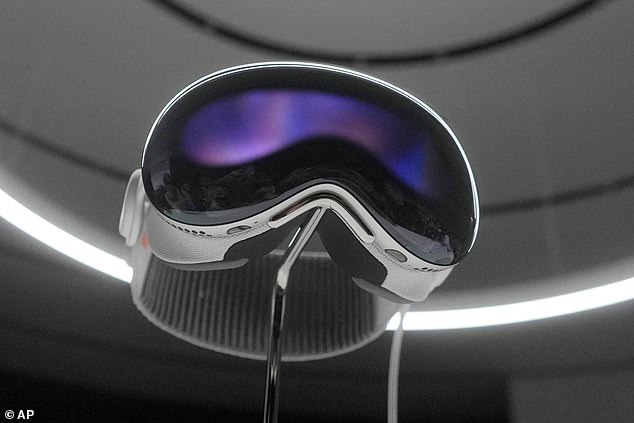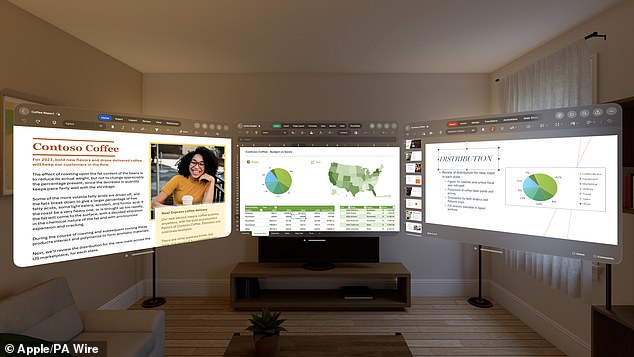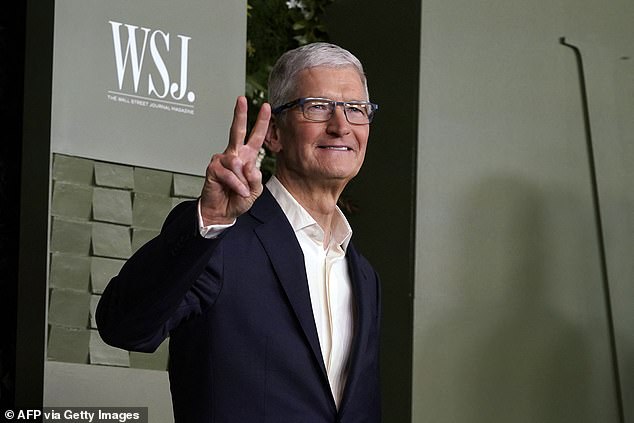Apple has made a quiet, tactical retreat from virtual and augmented reality, reducing production of its $3,500 Vision Pro headset.
An employee at Chinese manufacturer Luxshare, which has a contract to do final assembly of the Vision Pro, revealed that the tech giant has informed them that manufacturing of the product may need to be “finished” by the end of November.
Luxshare, according to this source, has already cut assembly rates in half: assembling around 1,000 Vision Pro units/day, down from a maximum of 2,000 units/day.
Apple CEO Tim Cook, however, has put on a brave face, saying that the $3,500 AR glasses are simply “not a mass-market product.”
“Right now, it’s an early adopter product,” Cook said late last month in a lengthy interview.
‘People who want to have tomorrow’s technology today, that’s what it’s for. Fortunately, there are enough people in that field that it’s exciting.”
In fact, industry analysts at Counterpoint Research estimate that Apple only sold about 370,000 of its Vision Pro headsets in the first three quarters of 2024, figures dwarfed by the millions of cheaper Quest headsets sold by rival Meta.
And with the holiday season quickly approaching, its analysts see no signs of improvement and predict that only about 50,000 more Vision Pros will be sold this year.
Apple is making a quiet, tactical retreat from virtual reality, reducing production of its $3,500 Vision Pro headset. A Luxshare employee, hired to do final assembly of the Vision Pro, revealed that Apple could “shut down” production at the end of November.

Some unhappy Vision Pro customers rushed to return the headphones, complaining that the small screen hurt their eyes, was uncomfortable, and had features that weren’t worth the high price.
By contrast, Meta, Facebook’s parent company, sold about six million Quest 2 headsets and about three million of its next-generation Quest 3 in the first three quarters after its introduction, according to Counterpoint.
Meta’s Quest 3 costs $500, thousands less than the Vision Pro.
“Obviously I would like to sell more,” Cook said. Wall Street Journal in October.
“I would always like to sell more of everything,” he explained, “because ultimately we want to get our products into the hands of as many people as possible.”
Cook, who also said he uses the futuristic Vision Pro every day, described the device’s launch as a success simply by bringing to market a first product that software developers and app creators can now work with to create new products.
“I think today it’s a success from an ecosystem-building standpoint,” Cook said.
“Over time, everything gets better,” he added, “and it will also continue its course of ever-increasing improvement.”
“It doesn’t happen overnight,” Cook said, comparing the Vision Pro’s slow rollout to the early days of the iPod, iPhone and Airpods. “None of these did.”
But it’s clear from the company’s revised plans for a second Vision Pro model that there was disappointment over poor sales of this revolutionary new headset – a ‘spatial computing’ console intended to replace desktop and laptop computers. .

Users have reported screen time delays and occasional freezing of their Vision Pro headphones. One user said their software had the most bugs of any first-generation product he had used, adding that the “wow factor” didn’t get over the fact that “I carry this big thing on my head.”
That recall was first reported in June by The Information, who learned that Apple was working on a more affordable, fewer-featured Vision glasses product, hoping to release this budget model sometime before the end of 2025.
Development of a true second-generation version of the high-end headphones, tentatively titled Vision Pro 2, had been put on hold, the technology news site reported.
Elsewhere in Apple’s supply chain for the Vision Pro, some factory employees reported that manufacturing of the device’s internal components had already stopped in May.
Anonymous sources from three suppliers working within Apple’s portfolio have currently built enough parts to make between 500,000 and 600,000 Vision Pro headphones.
Apple had previously told one of its suppliers to anticipate a production load of components needed for approximately 8 million Vision Pros over the device’s lifetime, according to The information.

However, Apple CEO Tim Cook (above) has put on a brave face and said that the $3,500 AR glasses are simply “not a mass-market product.” And he added: “Right now, it is an early adopter product (…) People who want to have tomorrow’s technology today, that’s what it’s for.”
However, the Cupertino-based tech giant appears to have revised that expectation downward, telling at least one supplier to expect to work building components for just 4 million units over the lifetime of the cheaper Vision Pro, named after code is N109.
Diehard Apple fans online have continued to talk nonsense about the Vision Pro, comparing its price less to the status of a luxury toy and more to the historical price of true innovation.
A poster for r/VisionPro Reddit Forum noted that Apple’s original desktop computer, the Macintosh 128K, cost approximately $7,300 adjusted for inflation when it was released on January 24, 1984.
“The original Macintosh was a $7,000 (in today’s dollars) piece of consumer technology that kind of changed the world,” argued the fan, owner of the Vision Pro.
“It had very little memory, barely enough space on its single 400 KB floppy drive, and it didn’t take off until the LaserWriter was introduced,” he added. “Now look.”
“I had the same feelings with the Vision Pro as I did with that first limited little Mac.”
DailyMail.com has contacted Apple for comment and will update this article if the iPhone maker responds.


